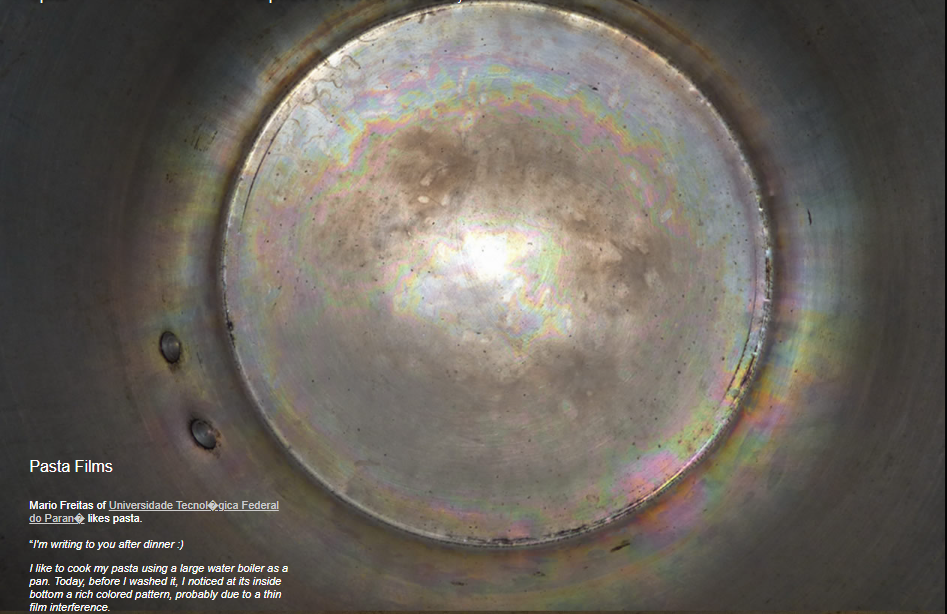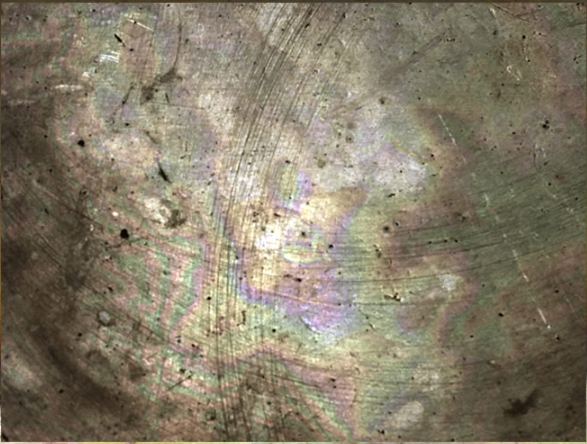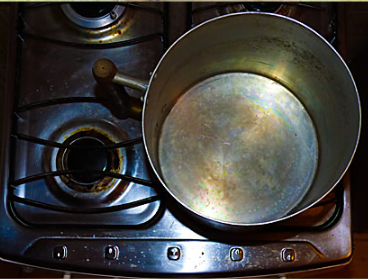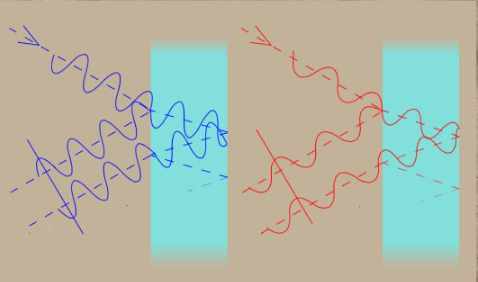Pasta film interference - OPOD
Pasta Film Interference - An Intriguing Optical Phenomenon
Pasta is not only a delicious dish but also a source of wonder and intrigue. Mario Freitas, a pasta enthusiast from Universidade Tecnológica Federal do Paraná, stumbled upon a fascinating discovery while cooking his favorite meal. After dinner, as he was cleaning his large water boiler used as a pan, he noticed a captivating pattern of rich colors on the inside bottom of the pan. This colorful phenomenon, likely caused by thin film interference, piqued his curiosity and led to further investigation.
Upon further exploration in the OPOD Gastronomy Laboratories, it was confirmed that these vibrant colors appear when cooking pasta but not when boiling vegetables. This intriguing observation raises questions about the underlying science behind this phenomenon. Are the starches present in the pasta responsible for creating thin transparent films? Or could it be the result of thermolysis or hydrolysis products? This opens up avenues for extensive research on the starch chemistry and its role in forming optically thin films.
It is worth mentioning that the colors observed in the pasta films are the result of optical thin film interference. The iridescent hues arise from the interference between light waves reflected from the front and back surfaces of the film, possibly composed of starch. Let's delve deeper into the mechanics behind this captivating phenomenon:
-
Reflection and Phase Change: When light waves strike the front surface of the film, some are directly reflected with a 180° phase change. Simultaneously, other light waves enter the film and undergo internal reflection from its rear surface. These two waves combine, creating interference patterns that give rise to specific colors.
-
Color Variation: The particular colors produced through thin film interference depend on various factors, including the viewing angle, film thickness, and refractive index. Different viewing angles will reveal different hues, while changes in film thickness or refractive index can alter the colors observed.
To illustrate this concept, let's consider the example of red and blue waves. The red waves exhibit constructive interference, resulting in a visible red reflection in the direction of observation. This occurs when the two reflected waves are in phase. On the other hand, the blue waves experience destructive interference, causing them to cancel each other out and resulting in no visible blue reflection.
Mario Freitas captured the beauty of these colorful phenomena through captivating images. The top image provides an overhead view of the pan, showcasing the overall pattern formed by the thin film interference. The second image offers a detailed macro zoom, allowing us to appreciate the intricacies of the colorful film. Finally, the third image contextualizes the pan on a gas stove, providing a glimpse into the environment where this optical marvel occurs.
While Mario's images may not be conventionally considered aesthetically pleasing, they play a crucial role in understanding the context and capturing the essence of this intriguing phenomenon. These visuals allow us to appreciate the natural occurrence of thin film interference in our everyday lives, even in unexpected places like a pasta-cooking pan.
In conclusion, pasta film interference is a captivating optical phenomenon that adds a touch of magic to our culinary experiences. By exploring the science behind these colorful films, we can deepen our understanding of the intricate interplay between light waves and thin films. Further research into the starch chemistry, egg freshness, and mass could uncover even more insights into dough kneadability, pasta cooking time, and the propensity for thin film formation. So, next time you cook pasta, take a moment to marvel at the vibrant colors dancing in your pan, reminding us of the wonders that lie within the simplest of things.

Pasta Films
Mario Freitas of Universidade Tecnol�gica Federal do Paran� likes pasta.
“I'm writing to you after dinner :)
I like to cook my pasta using a large water boiler as a pan. Today, before I washed it, I noticed at its inside bottom a rich colored pattern, probably due to a thin film interference.
The top image was taken from above the pan, looking downwards, with the camera flash on. The second is a detail using macro zoom. The third is the boiler on my gas stove. I am conscious that it's not exactly a beautiful image, but perhaps it's important to see the context.”
Extensive further research in The OPOD Gastronomy Laboratories confirm these colours. They form when cooking pasta but not in the same pan when boiling vegetables. Further work is needed on potatoes and rice.
The colours undoubtedly arise from optical thin film interference as Mario states.
We might have some PhD students researching the starch chemistry relating to its role in forming optically thin films. Are the pasta starches themselves producing thin transparent films or are they thermolysis/hydrolysis products? An auxiliary PhD topic could be the effect of egg freshness and mass on dough kneadability/pasta cooking time and quality not to mention its thin film forming propensity.
All images ©Mario Freitas, shown with permission



The iridescent colours arise from interference between light waves reflected from the front and back film surfaces of the (starch?) film.
Take the red waves at right. Some of the incident waves are directly reflected from the front. Note that there is a 180° phase change when this happens. Some light enters the film and is internally reflected from its rear surface. The two waves combine. In the example the two waves are in phase and a red reflection would be seen in that direction.
Compare that with the shorter wavelength blue waves. The two outgoing waves are out of phase and cancel each other. No blue would be seen.
The particular colours produced depend on viewing angle, on the film thickness and its refractive index.
Note: this article has been automatically converted from the old site and may not appear as intended. You can find the original article here.
Reference Atmospheric Optics
If you use any of the definitions, information, or data presented on Atmospheric Optics, please copy the link or reference below to properly credit us as the reference source. Thank you!
-
<a href="https://atoptics.co.uk/blog/pasta-film-interference-opod/">Pasta film interference - OPOD</a>
-
"Pasta film interference - OPOD". Atmospheric Optics. Accessed on November 26, 2024. https://atoptics.co.uk/blog/pasta-film-interference-opod/.
-
"Pasta film interference - OPOD". Atmospheric Optics, https://atoptics.co.uk/blog/pasta-film-interference-opod/. Accessed 26 November, 2024
-
Pasta film interference - OPOD. Atmospheric Optics. Retrieved from https://atoptics.co.uk/blog/pasta-film-interference-opod/.